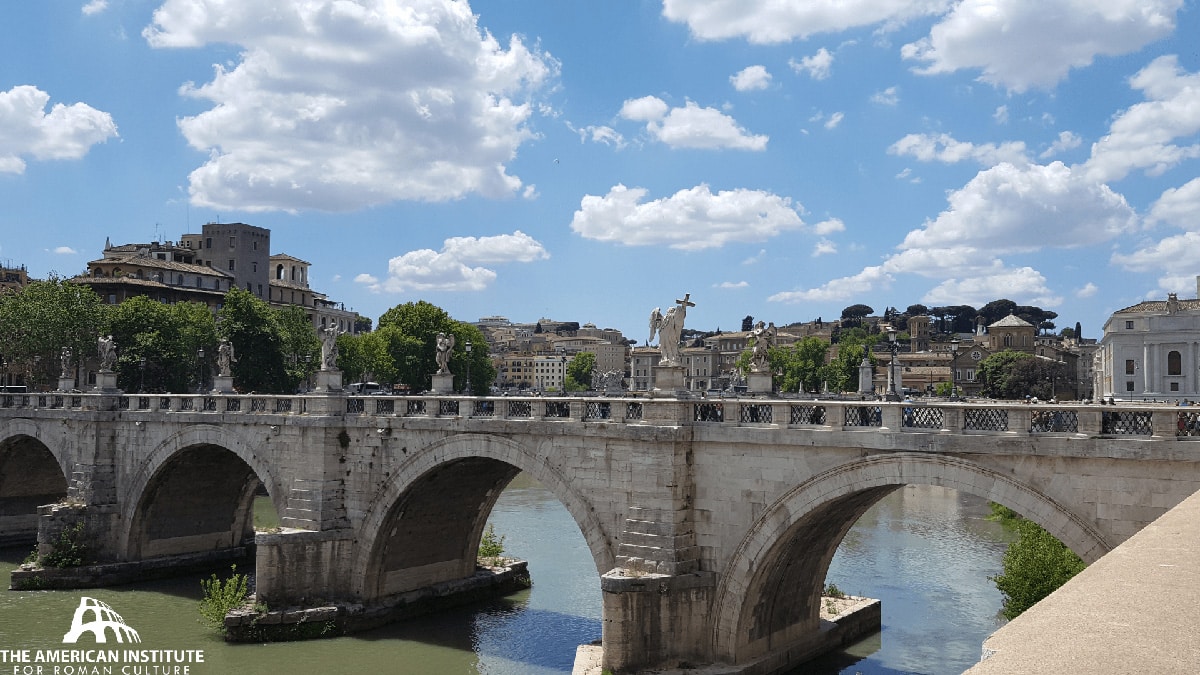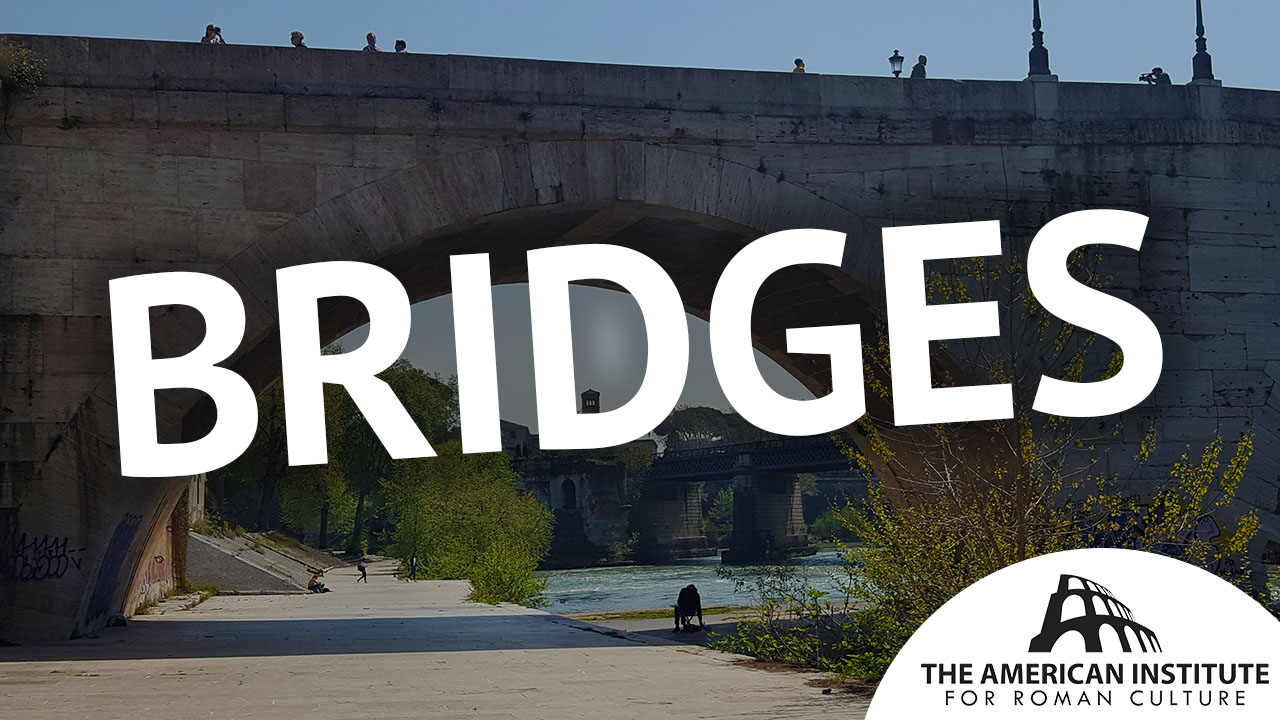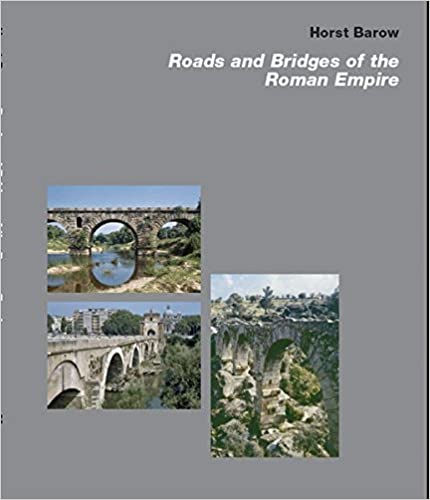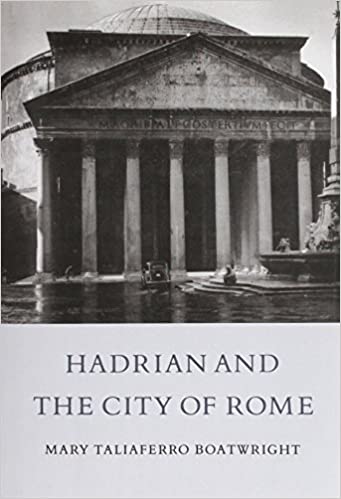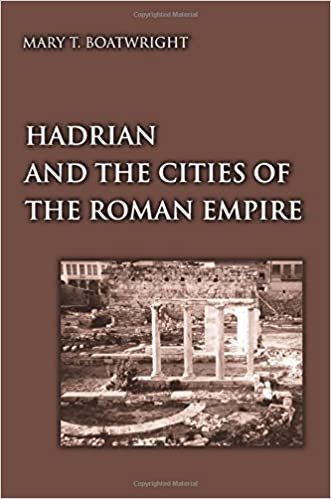Start with our video overview:
The Pons Aelius is a bridge built by Emperor Hadrian in 134 CE. It crosses the Tiber, and connects the Campus Martius to Hadrian’s Mausoleum (known today as the Castel Sant’Angelo). The ancient bridge was made of tufa and travertine stone, and crossed the river on three main arches. There were also two smaller arches on each side, which supported ramps to the bridge.
The Pons Aelius is named after Hadrian, who went by the name Publius Aelius Hadrianus. It was also called the Pons Hadriani (Historia Augusta, Hadrian, 19). During the late Roman Empire, the bridge was used primarily by pilgrims to reach St. Peter’s Basilica. By the sixth century, it was known as Pons Sancti Petri (Procopius, Gothic Wars 1.19). In 590 CE, Pope Gregory I had a vision of Archangel Michael atop Hadrian’s Mausoleum, announcing an end to a plague that was afflicting Rome. This gave the bridge its current name, Ponte Sant’Angelo.
In 1450 CE, the bridge was damaged by a large group of pilgrims. Crowds were so large that they broke its parapets, causing many to fall into the river. The bridge was eventually restored by Pope Nicholas V, who widened the walking route for pilgrims.
In the 16th century, Pope Clement VII ordered statues of Saints Peter and Paul to be placed at either end of the bridge. Later, in 1668, Pope Clement IX commissioned the celebrated artist Gian Lorenzo Bernini to design a series of ten angel sculptures for the bridge, each holding an instrument of Christ’s Passion. Bernini created sketches for all ten angels and personally sculpted two: the Angel with the Crown of Thorns and the Angel with the Superscription. Pope Clement IX was so taken with Bernini’s two angels that he decided to keep them for himself. He had copies made to place on the bridge, while the originals were installed in the Church of Sant’Andrea delle Fratte, where they can still be admired today.
Today, the bridge has five equally sized arches. The three central arches are original, dating to the time of Hadrian. Its smaller side arches and ramps were removed in the 19th century, when the Tiber embankments were built.
Bibliography:
Boatwright, M. T. (1987). “Hadrian’s Mausoleum and the Pons Aelius.” In Hadrian and the City of Rome (pp. 161–181). Princeton University Press. https://www.jstor.org/stable/j.ctv18zhd8v
Pierce, S. R. (1925). “The Mausoleum of Hadrian and the Pons Aelius.” The Journal of Roman Studies, 15, 75–103. https://www.jstor.org/stable/295602
Platner, Samuel. (1929). “Pons Ælius.” In A Topographical Dictionary of Ancient Rome (p.396-397). Retrieved from: https://penelope.uchicago.edu/Thayer/E/Gazetteer/Places/Europe/Italy/Lazio/Roma/Rome/_Texts/PLATOP*/Pons_Aelius.html#ref1
Schmidt, Emma. (2016). “The Story of Ponte Sant’Angelo.” Paideia Institute. https://www.paideiainstitute.org/ponte_sant_angelo
“Structural Analysis of Ponte Sant’Angelo.” Engineering Rome. https://engineeringrome.org/structural-analysis-of-ponte-santangelo/
PONS AELIUS, the modern Ponte S. Angelo, built by Hadrian in connection with his mausoleum (cf. Ill. 34) and finished in 134 A.D. (Cass. Dio lxix. 23; CIL vi. 973; Not. app.; Pol. Silv. 545).
Read more:
It is represented on a bronze medallion of Hadrian which is accepted as genuine by Gnecchi (Med. ii. 42. 4). Besides this official name the bridge was called pons Hadriani (Hist. Aug. Hadr. 19; Prud. Peristeph. xii. 6 ; Mirab. Il; Pol. Silv. 545; Ordo Bened. pass.), and in the Middle Ages Pons S. Petri (Anon. Magi. 158; Eins. pass.; Jord. i. I. 416). It had three main arches 18.39 metres in diameter, with three smaller arches on the left, 3, 3.5 and 7.59 metres in diameter respectively, and two on the right, 7.59 and 3.75 in diameter. From the central part, over the main arches, the bridge sloped down at an angle of 15 degrees, and the approach on the left side was by a long ramp. The total width was 10.95 metres, and the material travertine with peperino between the arches. The inscription (CIL vi. 973) was seen, probably on the parapet,1 in 1375 (Mitt. 1893, 321-323), so that apparently this bridge suffered no great injury until December 1450, when the parapet was broken by the throngs of pilgrims, and restored by Nicholas V. In 1527 the statues of S. Peter and S. Paul were erected by Clement VII, and in 1669-71 Clement IX placed on the parapet the famous statues representing angels (Mem. A.P. i. I. 224). Two of the arches on the left side had become covered up, but the structure remained intact until the building of the present embankment in 1892 necessitated the reconstruction of the ends of the bridge, so that only the three central arches are now standing.
(For description and plans of the original bridge and an account of the changes and discoveries in 1892, see NS 1892, 231-233; 412-428; BC 1888, 129-130; 1893, 14-26; Mitt. 1893, 321-323; LR 22-24; JRS 1925, 75-98.)
1 Mr. S. R. Pierce informs me that he has noticed a few letters of a large inscription on the upstream side, in the archivolt moulding of the central arch. All that could be read was N (?) … LI
This content is brought to you by The American Institute for Roman Culture, a 501(C)3 US Non-Profit Organization.
Please support our mission to aid learning and understanding of ancient Rome through free-to-access content by donating today.
Hadrian and the Cities of the Roman Empire
by Mary T. Boatwright (Author)
Cite This Page
Cite this page as: Darius Arya, The American Institute for Roman Culture, “Pons Aelius (Aelian Bridge, Ponte Sant’Angelo)” Ancient Rome Live. Last modified 05/15/2025. https://ancientromelive.org/pons-aelius-aelian-bridge-ponte-santangelo/
License
Created by The American Institute of Roman Culture, published on 05/15/2025 under the following license: Creative Commons: Attribution-NonCommercial-ShareAlike. This license lets others remix, tweak, and build upon this content non-commercially, as long as they credit the author and license their new creations under the identical terms. Please note that content linked from this page may have different licensing terms.

